
On this day in Tudor history, 13th February, Catherine Howard and Jane Boleyn, Lady Rochford, were executed at the Tower of London, an astrologer and physician was baptised, and Bess of Hardwick died…
[Read More...]
On this day in Tudor history, 13th February, Catherine Howard and Jane Boleyn, Lady Rochford, were executed at the Tower of London, an astrologer and physician was baptised, and Bess of Hardwick died…
[Read More...]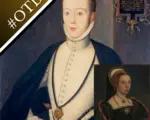
On this day in Tudor history, 10th February, Catherine Howard was escorted to the Tower of London to prepare for her execution, Henry Neville, 5th Earl of Westmorland, died, and Mary, Queen of Scots’ second husband, Lord Darnley, was murdered…
[Read More...]
On this day in Tudor history, 21st January, a bill of attainder was passed against Queen Catherine Howard, the Earl of Surrey and friends went on the rampage in London, and Eustace Chapuys, the imperial ambassador, was laid to rest…
[Read More...]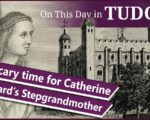
On this day in Tudor history, 9th December 1541, in the reign of King Henry VIII, Catherine Howard’s stepgrandmother, Agnes Tilney, Dowager Duchess of Norfolk was questioned.
The sixty-four-year-old dowager duchess had been detained at the Lord Chancellor’s home and on 9th December, she was questioned regarding the location of her money and jewels.
Find out about why she was detained and questioned, why she ended up in the Tower, and what happened when the dowager duchess was indicted for misprision of treason…
[Read More...]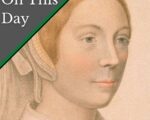
On this day in Tudor history, 11th November 1541, the Feast of Martinmas, King Henry VIII’s council sent Archbishop Thomas Cranmer a letter containing instructions to move Queen Catherine Howard, who had been confined to her apartments in Hampton Court Palace, to Syon House, formerly Syon Abbey.
In the video and transcript below, I share the instructions that Archbishop Cranmer was given and what Catherine was sent for her time at Syon. I also explain what else happened on this day in 1541, along with some trivia about the people in charge of Catherine’s household at Syon.
[Read More...]
As today is the anniversary of King Henry VIII abandoning his fifth wife, Catherine Howard, at Hampton Court Palace after allegations had been made against her, I thought I’d share this quiz from our archives.
How much do you know about Catherine Howard’s fall?
Test yourself with this fun quiz.
[Read More...]
It’s Friday, which means it’s time for me to share a Tudor history treasure from our archives.
This week, I have a wonderful expert talk from Laura Loney and Ashley Risk who have done extensive research to determine who might be in the famous oval portrait once thought to be Catherine Howard.
[Read More...]
On this day in history, 13th February 1608, prominent Tudor noblewoman and one of the richest people in England, Elizabeth Talbot, Countess of Shrewsbury, more commonly known as Bess of Hardwick, died at her home at Hardwick.
Bess of Hardwick is known for her building projects, which included Chatsworth and Hardwick Hall, her beautiful needlework and the fact that she and Shrewsbury were guardians of the captive Mary, Queen of Scots.
Find out more about this fascinating Tudor lady in this talk…
[Read More...]
On this day in Tudor history, 10th February 1542, Catherine Howard, King Henry VIII’s fifth wife, was escorted by barge from Syon House, where she’d been kept since November 1541, to the Tower of London in preparation for her execution.
Sadly, the queen would have seen the heads of her former lover, Francis Dereham, and her sweetheart, Thomas Culpeper, as she made her way to the Tower – a reminder of her own fate.
Find out more in this talk…
[Read More...]
On the night of this day in Tudor history, 21st January 1543, Henry Howard, Earl of Surrey, Thomas Wyatt the Younger and several other youths went on a five-hour rampage in London.
Surrey regretted his actions, calling that night “a madding time”, but the king and the privy council took it seriously.
Find out what happened to Surrey and his fellow vandals in this talk…
[Read More...]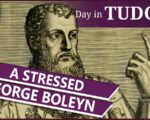
On this day in Tudor history, 11th November 1534, Philippe de Chabot, Seigneur De Brion and Admiral of France, landed on English soil. The purpose of the diplomatic mission he was leading was to renew Anglo-French relations.
George Boleyn, Lord Rochford, brother of Queen Anne Boleyn, had been put in charge of meeting the admiral and escorting him on his journey from the south coast to London, but it was no easy task. The admiral did not make things easy at all, and George was rather stressed about the situation.
Find out what happened, and how and why the ambassador’s visit was bad news all round for the Boleyns, in this talk…
[Read More...]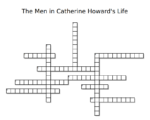
In celebration of the publication of this month’s expert talk – Gareth Russell on the men in Catherine Howard’s story – I thought I’d test you on your knowledge of the men in her life and story.
How much do you know about Catherine Howard and the men in her story?
Test yourself now!
[Read More...]
On this day in Tudor history, 6th November 1501, Catherine of Aragon, daughter of Ferdinand II of Aragon and Isabella I of Castile, met her betrothed, Arthur, Prince of Wales, eldest son of King Henry VII, at Dogmersfield in Hampshire.
The couple were actually already married by proxy, but had never met, and Catherine had only just arrived in England.
Find out more about the lead-up to Catherine of Aragon and Arthur Tudor’s meeting on 6th November 1501, including Catherine’s journey from Spain to England, how their meeting went and what happened next, in this talk…
[Read More...]
On this day in history, 2nd November 1470, the feast of All Souls, King Edward V was born at Westminster Abbey, London. Young Edward was King of England for just 2 months in 1483 before he disappeared.
The events of his short life, his short reign and how it ended, are linked to the Tudors because Henry Tudor returned from exile to challenge King Richard III, who had, of course, taken the throne from Edward V.
Find out about Edward V’s life and how he came to be one of the famous Princes in the Tower, in this talk…
[Read More...]
Learn what is true, false and open for interpretation about the men in Queen Catherine Howard’s life and eventual downfall with Gareth Russell’s amazing expert talk on the Dukes, Deceivers and Disappointments in Catherine’s life.
[Read More...]
On this day in Tudor history, 16th September 1519, scholar, humanist, theologian, Dean of St Paul’s and founder of St Paul’s School, John Colet died after suffering three attacks of sweating sickness between 1517 and 1519. Humanists such as Erasmus were influenced by Colet’s work.
In this video, I share an overview of this influential scholar’s life, including the fact that he was one of 20-22 children and that he used his wealth to refound a school…
[Read More...]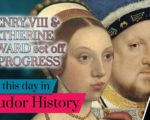
On this day in Tudor history, 30th June 1541, Henry VIII and his fifth wife, Catherine Howard, set off on their progress to the north of England.
Why did Henry VIII choose to go to the North?
Find out in this edition of #TudorHistoryShorts…
[Read More...]
A couple of weeks ago we asked our Instagram followers to vote on their favourite Tudor Monarch and wife of Henry VIII. We combined the votes with the most searched questions on Google and the country in which they are most popular. Here are the results!

In this second part of This Week in Tudor History for week beginning 8th February, I talk about two parliamentary acts that allowed a king to execute his wife and to execute people showing signs of madness; a miscarriage of justice which led to a priest being executed in Elizabeth I’s reign; an Elizabethan astrologer who was ridiculed after his prophecies didn’t come true, and a man known as William Waste-all.
11th February 1542 – King Henry VIII gave his assent “in absentia” to an act of attainder against his fifth wife, Catherine Howard, and her lady-in-waiting, Jane Boleyn, Lady Rochford. A bill allowing people showing signs of lunacy was also passed, an awful thing, but the king was determined to take revenge.
[Read More...]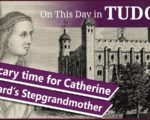
On this day in Tudor history, 9th December 1541, sixty-four-year-old Agnes Tilney, the Dowager Duchess of Norfolk and step-grandmother of Queen Catherine Howard, who was being detained at the Lord Chancellor’s home, was questioned regarding the location of her money and jewels.
Why? What was all this about?
Find out about this, why the dowager duchess ended up in the Tower, and what happened when she was indicted for misprision of treason, in today’s talk.
[Read More...]
On this day in Tudor history, 14th November 1541, an inventory was taken of “the goods and chattels, lands and fees of” Thomas Culpeper, a groom of King Henry VIII’s privy chamber and a man who had been having secret meetings with Catherine Howard, Henry VIII’s fifth wife.
An inventory had also been taken of the possessions of Jane Boleyn, Lady Rochford, wife of the late George Boleyn, a woman who had allegedly helped the queen meet with Culpeper.
But what was going on in November 1541 and what was listed in these inventories?
[Read More...]
On this day in Tudor history, 20th June 1540, Henry VIII’s fourth wife, Queen Anne of Cleves, complained to her advisor about her husband’s interest in one of her maids of honour, a certain Catherine Howard. What was going on and what happened next?
Find out more about the final weeks of Henry VIII’s and Anne of Cleves’ marriage in today’s talk.
[Read More...]
On this day in Tudor history, 10th February 1542, Catherine Howard, King Henry VIII’s fifth wife, was escorted by barge from Syon House, where she’d been kept since November 1541, to the Tower of London in preparation for her execution.
Sadly, the queen would have seen the heads of her former lover, Francis Dereham, and her sweetheart, Thomas Culpeper, as she made her way to the Tower – a reminder of her own fate.
Find out more in today’s talk.
[Read More...]
On this day in Tudor history, 17th January 1541, courtier, diplomat and poet, Sir Thomas Wyatt the Elder, was arrested and sent to the Tower of London after being accused of corresponding with Cardinal Reginald Pole, and referring to the prospect of Henry VIII’s death.
Wyatt was taken to the Tower and it looked like he’d be executed, but he was saved by Queen Catherine Howard, but at a huge cost.
Find out more about what Wyatt was accused of, how he escaped execution and what he had to agree to, in today’s talk.
[Read More...]
On this day in Tudor history, 20th December 1541, a “very sickly” Agnes Tilney, Dowager Duchess of Norfolk, begged King Henry VIII for forgiveness.
The dowager duchess had been arrested and taken to the Tower accused of misprision of treason for hiding her stepgranddaughter Catherine Howard’s past relationship with Francis Dereham.
In today’s talk, I share what the dowager duchess wrote to the king and also what happened to this sickly woman.
[Read More...]
On this day in Tudor history, 1st December 1541, Thomas Culpeper, a member of King Henry VIII’s privy chamber, and Francis Dereham, a secretary to Queen Catherine Howard, were tried for high treason at Guildhall, London. Both men had been linked romantically with the queen.
They were both found guilty of treason and sentenced to be hanged, drawn and quartered.
But what about Catherine Howard and her lady, Jane Boleyn, Lady Rochford, who had also been arrested. What was happening with them? Find out more about them, and the trial of Dereham and Culpeper, in today’s talk.
[Read More...]
On this day in Tudor history, 11th November 1541, the feast of Martinmas, King Henry VIII’s council sent Archbishop Thomas Cranmer a letter containing instructions to move Queen Catherine Howard from Hampton Court Palace to Syon House, formerly Syon Abbey.
In today’s talk, Claire Ridgway, founder of the Tudor Society, shares the instructions that Cranmer was given and what the queen was sent for her time at Syon. Claire also shares what else happened on this day in 1541, along with some trivia about the people in charge of Catherine’s household at Syon.
[Read More...]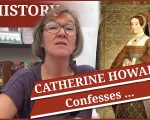
On this day in Tudor history, Monday 7th November 1541, Thomas Cranmer, Archbishop of Canterbury, visited Catherine Howard, fifth wife of King Henry VIII, in her chambers at Hampton Court Palace.
Catherine had been confined to her chambers and Archbishop Cranmer’s job was to get the now hysterical queen to talk, to confess. He visited her a few times over a period of 24 hours and finally got a confession from her. But what did Catherine have to say?
Find out all about Catherine Howard’s confessions, and there were several, in today’s talk.
[Read More...]
On this day in Tudor history, Sunday 6th November 1541, Catherine Howard, Henry VIII’s fifth wife, was abandoned by her husband the king at Hampton Court Palace. She would never see him again.
On the same day, Queen Catherine was visited by a delegation of king’s council members and informed of allegations made against her.
What exactly happened on this day in 1541 and what has this to do with Hampton Court Palace’s ‘Haunted Gallery’? Find out in today’s talk.
[Read More...]
On this day in Tudor history, 2nd November 1541, All Souls’ Day, Archbishop Thomas Cranmer gave King Henry VIII a letter that would spark off the beginning of the end for Queen Catherine Howard, Henry VIII’s fifth wife.
Catherine Howard’s past, her romances with Henry Manox and Francis Dereham, were about to come back to haunt her, and her present relationship with Thomas Culpeper would soon be uncovered.
In today’s talk, I explain exactly what was in Archbishop Cranmer’s letter and what happened next.
[Read More...]